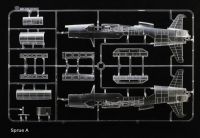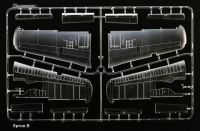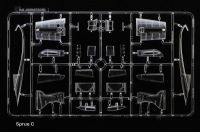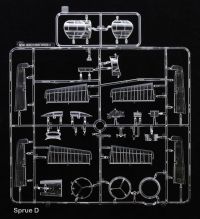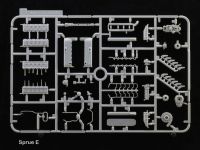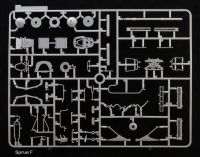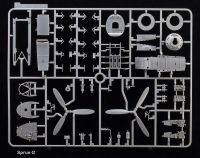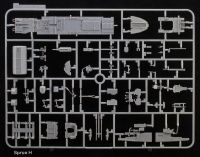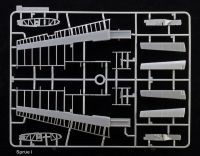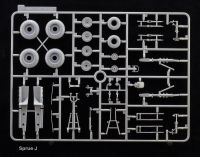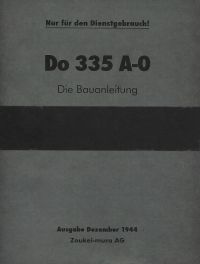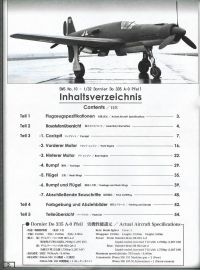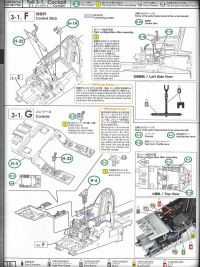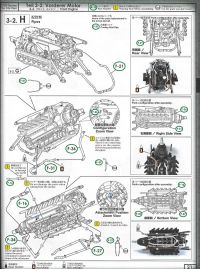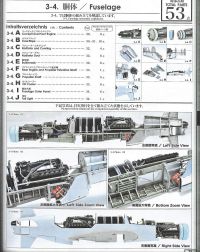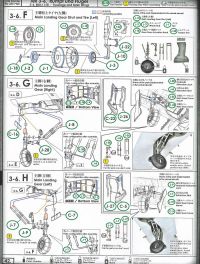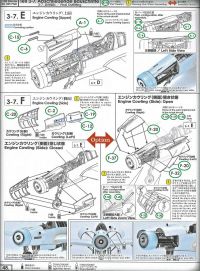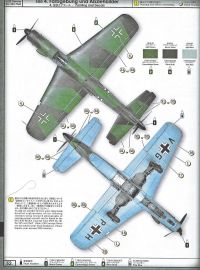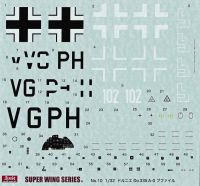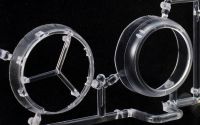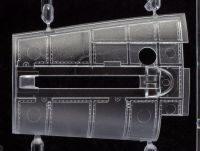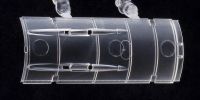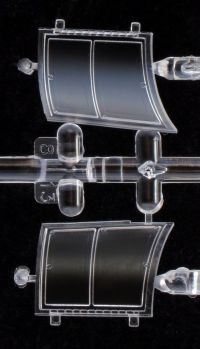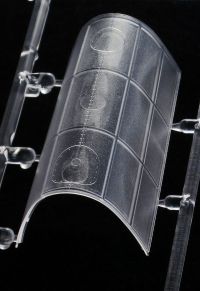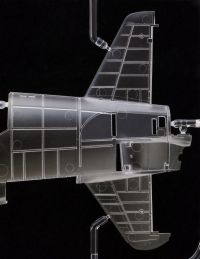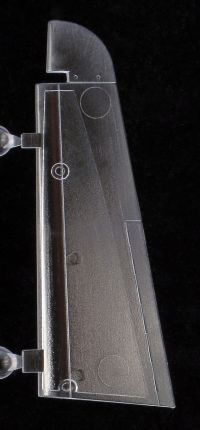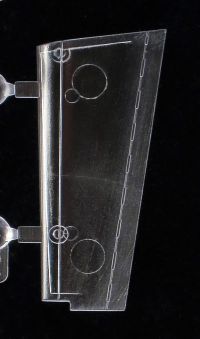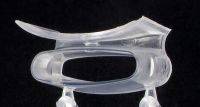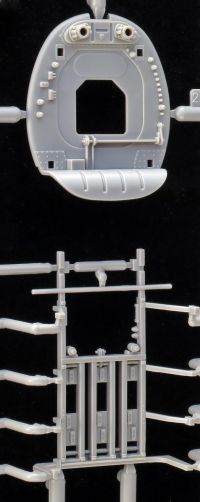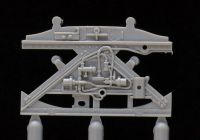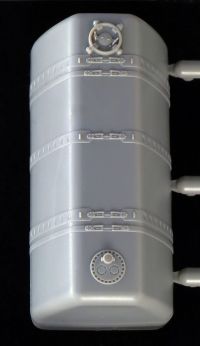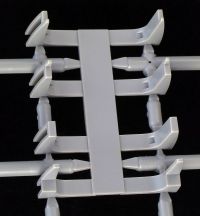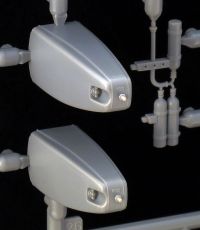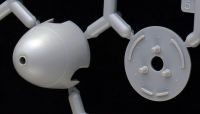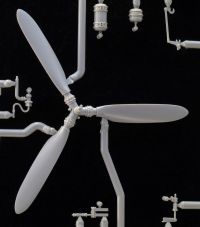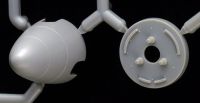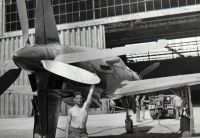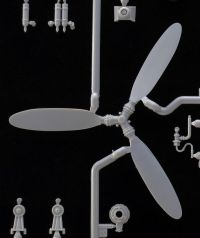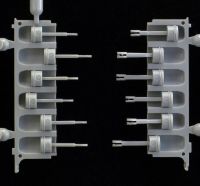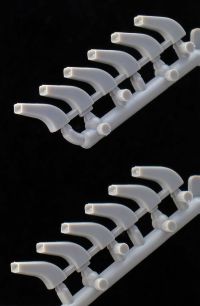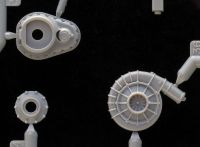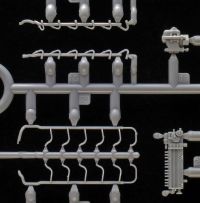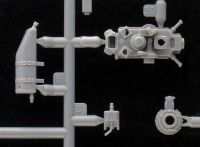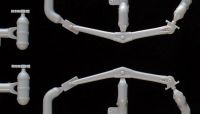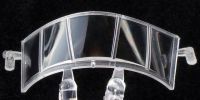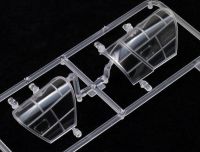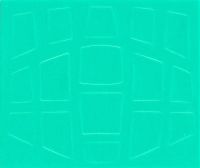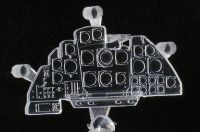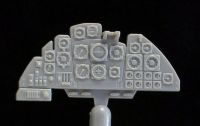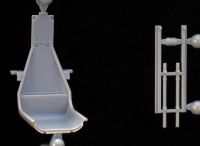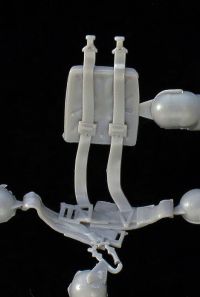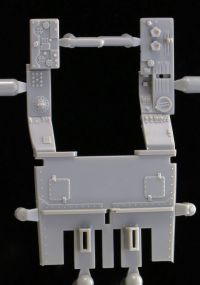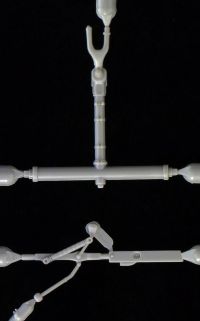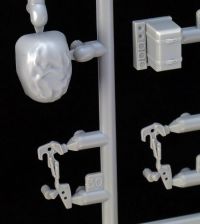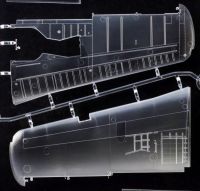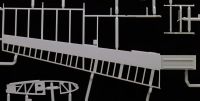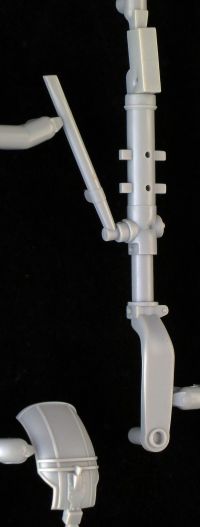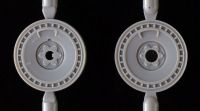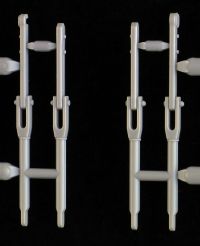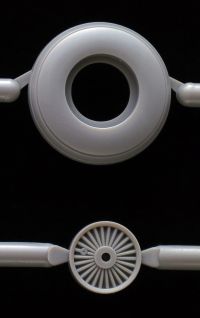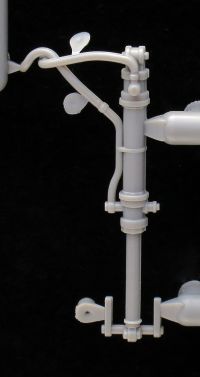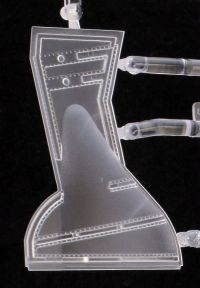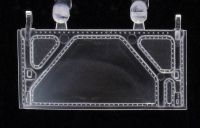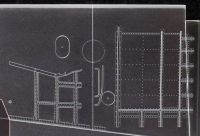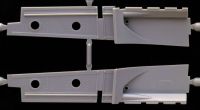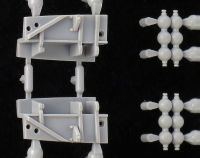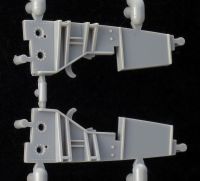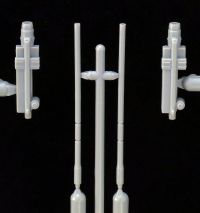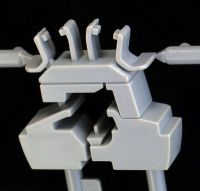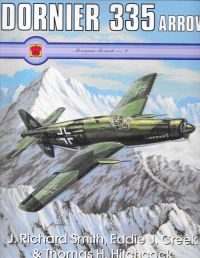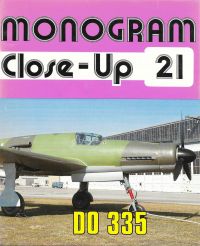Zoukei-Mura | 1/32 Do 335A-0 "Pfeil" Super Wing Series No. 10
Reviewed by Damian Andrus
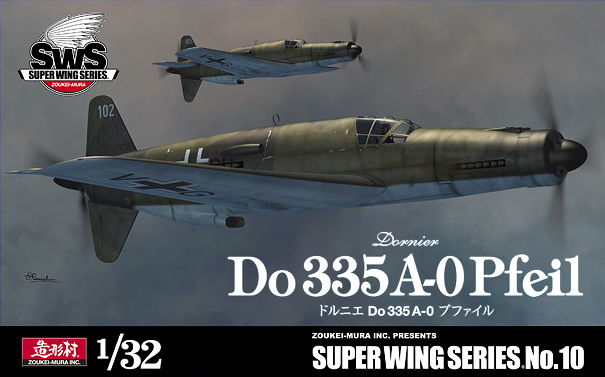
This 1/32nd Dornier Do 335A-0 Pfeil (Arrow) kit is produced by the Japanese company Zoukei-Mura, Inc.. As noted on the box, it is number ten in their 1/32 scale Super Wing Series.
The kit presents well, packed in a sturdy box. There is an image of a pair of Pfeile, in flight through cloudy skies of Northern Europe late in the war, depicted on the top.
The Zoukei-Mura 1/32 kit is based on the sole remaining Do 335A-0 currently residing at the National Air & Space Museum, Smithsonian Institution (Udvar-Hazy Center, Dulles Airport, Washington, D.C.).
Contents:
- 7 sprues in gray plastic, (two of Sprue E included).
- 4 sprues in clear plastic.
- 1 sheet of canopy masks.
- 1 sheet of decals.
- 1 Instruction booklet.
The external kit parts - flying surfaces, fuselage are molded in lightly frosted clear plastic*. This gives modelers the option of revealing provided interior detail or painting the exterior in a standard fashion. One can also choose to paint half of the exterior and leave the other half in clear plastic for an interesting take on traditional presentation - some consider this the best of both worlds - or leave off parts of the skin completely. Few manufacturers give this many options!
The nose will require the addition of 50 grams of weight to keep the model from tail-sitting. Weights are not provided with the kit.
* Please note that clear plastic is more brittle than the gray, extra care is recommended when handling. The tough gray plastic internal structure should alleviate any possible fragility in the completed model.
Brief History - Dornier Do 335
The Do 335 was a single-seat fighter-bomber developed during the last days of WW II by Claude Dornier, who acquired a patent for the "push-pull'(fore and aft) engine layout in 1937. He proposed, in 1942, an aircraft using his twin-engine configuration to the RLM (Reichs-Luftfahrts-Ministerium) in response to their request for "a twin engine bomb-fighter for invasion and bombing, with no air command, 500kg bomb equipped, and a maximum speed of 800km/hr". This speed demand was thought to be impossible to meet without a jet-engine aircraft. However, the first test flight of the prototype in 1943 proved Dornier's design had excellent stability and maneuverability, despite the top speed being less than the required specification. Nevertheless, the positives outweighed the speed shortfall and the official designation would be "Do 335". Due to the plane's unusual cruciform tail layout, the name "Pfeil" (Arrow) was deemed appropriate.
The Pfeil's top speed of 770/km/hr put it in the elite class of piston-engine aircraft during WW II. It was also the first of its kind to be equipped with a compressed-air ejection seat for the pilot. The Do 335's speed, acceleration and maneuverability combined were extraordinary for a reciprocating engine aircraft. The A-0 variant armament consisted of two MG151/20 mm cannon placed on the upper cowl, one MK103/30 mm cannon, which fired through the prop hub, and one 500kg bomb.
Though slated for mass-production, less than 60 completed aircraft were produced, due to the loss of production facilities, etc. late in the war. There is no record of the Do 335 engaged in combat with the Allies. (1)
Flight Impressions
"Due to the tandem arrangement of the Do 335's engines, substantial performance advantages could be achieved over all other piston-engine aircraft; namely, superior speed , unimpaired flight on one engine and a internal load carrying capability without a substantial increase in drag due to its engine placement. All this in an extraordinary handling aircraft."
Heinrich Beauvais, One of the Luftwaffe's most respected test pilots who flew the Do 335. (2)
"This was possibly the most fascinating aircraft I've seen anywhere. Certainly the Do 335 had a most astonishing history....and I think it had tremendous potential. I think I'm right in saying that the Germans claimed speed of 472 mph at 21,000 feet, and we'd no reason to disbelieve this figure.....it was a remarkably speedy airplane."
Captain Eric M. Brown, Britain's Royal Aircraft Establishment. (3)
(1) Paraphrased from the Z-M Instruction Book.
(2) Do 335 Arrow, Monogram Monarch - 2, P. 13.
(3) Ibid., p. 37.
Sprue Shots
The sprues are beautifully molded, wrapped individually and well packed. No damage was detected during examination. For a twin-engine 1/32 kit, the Do 335 is surprisingly compact.
Instruction Booklet
The Instruction Book is 54 pages of well laid-out, extremely detailed construction information. The cockpit section alone is 7 pages long - with 5 approaches to finishing the Instrument Panel! This is a complicated kit with a large amount of detail. Therefore, I recommend each page be inspected thoroughly before starting construction.
Decals
The decals are thin and printed in register on a medium size backing sheet. Stencils are included. As the Do 335 was produced late in the war, this makes Luftwaffe marking variations limited. Captured a/c markings may be sourced from generic Allied sheets from the spares box or aftermarket providers. However, Luft '46 aficionados will be able to go to town on this baby.
Fuselage Exterior & Vertical Control Surfaces
The detail is very sharp and well to the standard of a kit of this class. Several open panels are provided for those that wish to have them opened to show off the wealth of detail therein. Open and closed cowl flaps are included. The rear radiator scoop is particularly nice.
The 'frosted' texture is on the exterior of the parts and varies from medium to very light. Since some choose not to utilize the semi-transparent nature of plastic in their build, it would be of some benefit to polish the surface. The fuselage, for example, could be improved so that the texture doesn't show through a thin topcoat of paint. Personally, I sand all of my plastic models, but not everyone does so a heads-up is in order.
Fuselage Interior
The molding details really shine with the interior parts. There are some reproduced in a finesse and complexity this reviewer has never seen in the injection molding process before. Very impressive stuff. If panels are placed in the open position, most of this will be readily visible. For those who tend to present their models closed-up, this kit may tempt them to make an exception. Well done, Zoukei-Mura!
Props & Spinners
The spinners and props are up to the standards set so far, beautifully rendered in orientation and detail. The rear spinner may have in fact had a central opening as indicated by the period photograph. The NASM example has a fiberglass reproduction of the rear spinner as the real article was lost over the years.
Engines
At the risk of sounding like a 'broken record', the same compliments must be laid at the feet of the molded detail of the DB 603 engines as with those parts above. An unusual amount of delicacy is imparted to the hoses, wiring and fittings. Without scratch-built additions one can have an excellent rendition of each engine straight from the box. The exhaust stacks have indented openings, a great start if one wants to drill them out.
A subject sure to arise: What's up with the parts not visible, pistons & connecting rods, for example , no matter the configuration selected? Why have them? I can see why the owner of Z-M wanted them there, because he's not just a manufacturer, he's a modeler, too. Knowing that special detail is there, even buried in the bowels of the kit, gives a special warmth and emotional investment that is just between the modeler and model. This reviewer admires and thanks him for that dedication.
Cockpit & Canopy
The windshield/canopy is provided with two parts for the open configuration and one for the closed. All are crystal clear. A sheet of canopy masks is included. Nice touch.
The cockpit parts are as well-molded and delicate as everything else so far. There is sufficient detail that there would probably be little demand for aftermarket additions. The cockpit sidewalls also form the sidewalls for the nose wheel bay. Two options are given for the instrument panel - clear and gray. Detail is improved over their Ta 152 panels.
The ejection seat consists of twelve pieces, including belts. The manner in which Z-M molds the belts is new to me: the seat belt/ shoulder harness is molded separately from the seat - this approach straddles the gap from molded-on to aftermarket. Interesting innovation.
Wings & Horizontal Control Surfaces
Surface texture is a bit more refined on the wings and horizontal tail surfaces compared to the fuselage. Molding is very crisp. One quirk on my example is the landing light cover is molded with a frosted texture rather than clear. It will need some polishing, or at least a clear coat such as Future to help add clarity.
Separate fillets are provided for both wings and horizontal stabilizers. Careful with the wing fillets - very delicate.
The flaps can be positioned either up or down. The control surfaces are separate so offsets may be applied by the modeler to give the model a more dynamic look.
Landing Gear & Gear Bays
The landing gear struts are highly detailed and substantial. Z-M provides a positive locking system so the legs should do the job without the need for replacement. Main wheels and tires are provided as separate parts; individual brake lines for the main wheels are a nice addition. The nose wheel strut is highly detailed and beefy as well, so there should be no problem when the built kit sits on the shelf.
All three wheel wells consist of several parts each and are nicely done. They're given as much attention as the rest of the kit. This is opposed to some manufacturers who appear to treat these areas as an afterthought. Some additional plumbing in the main gear bays, though, would not go amiss.
As noted above the nose will need 50 grams of weight to keep the model off of its tail.
Weapons
Two MG 151/20 mm and one MK 103/30 mm cannon are included. The muzzles of the 151's are recessed, once again, to give a staring point for drilling, if so desired. Ammo cans and feed chutes are included. No bomb is included in the kit.
Conclusions
The Zoukei-Mura 1/32 Do 335A-0 kit is an excellent depiction of the prototype. Especially attractive is Zouki-Mura's attention to detail and their exceptional response to modeler feedback. The refinement of surface detail over their Ta 152 kits is noteworthy.
On the down side, the inconsistency of the 'frosted' finish on the external surfaces, as well as the brittle character of the clear plastic, is somewhat of an irritant. Personally, a smooth surface plastic option would be preferable, however that's nowhere near being a deal-breaker.
This reviewer highly recommends this kit and considers it would be a noteworthy addition to any collection. It will build into an especially stunning model. Also, am very much looking forward to their upcoming Fw 190A series of releases.
Acknowledgment
Many thanks to HobbyLink Japan for the review kit, which can be purchased at the following link:
Zoukei-Mura 1/32 Do 335A-0 "Pfeil"
References
Dornier 335 Arrow, Monogram Monarch - 2, by J. Richard Smith, Eddie J. Creek & Thomas H. Hitchcock, Monogram Aviation Publications, 1983 & 1997, ISBN 0-914144-52-9
Monogram Close-Up 21, Do 335, by J. Richard Smith, Eddie J. Creek, Monogram Aviation Publications, 1983, ISBN 0-914144-21-9
© Damian Andrus 2016
This product is available from the following LSP sponsors
This review was published on Wednesday, December 21 2016; Last modified on Sunday, December 25 2016

